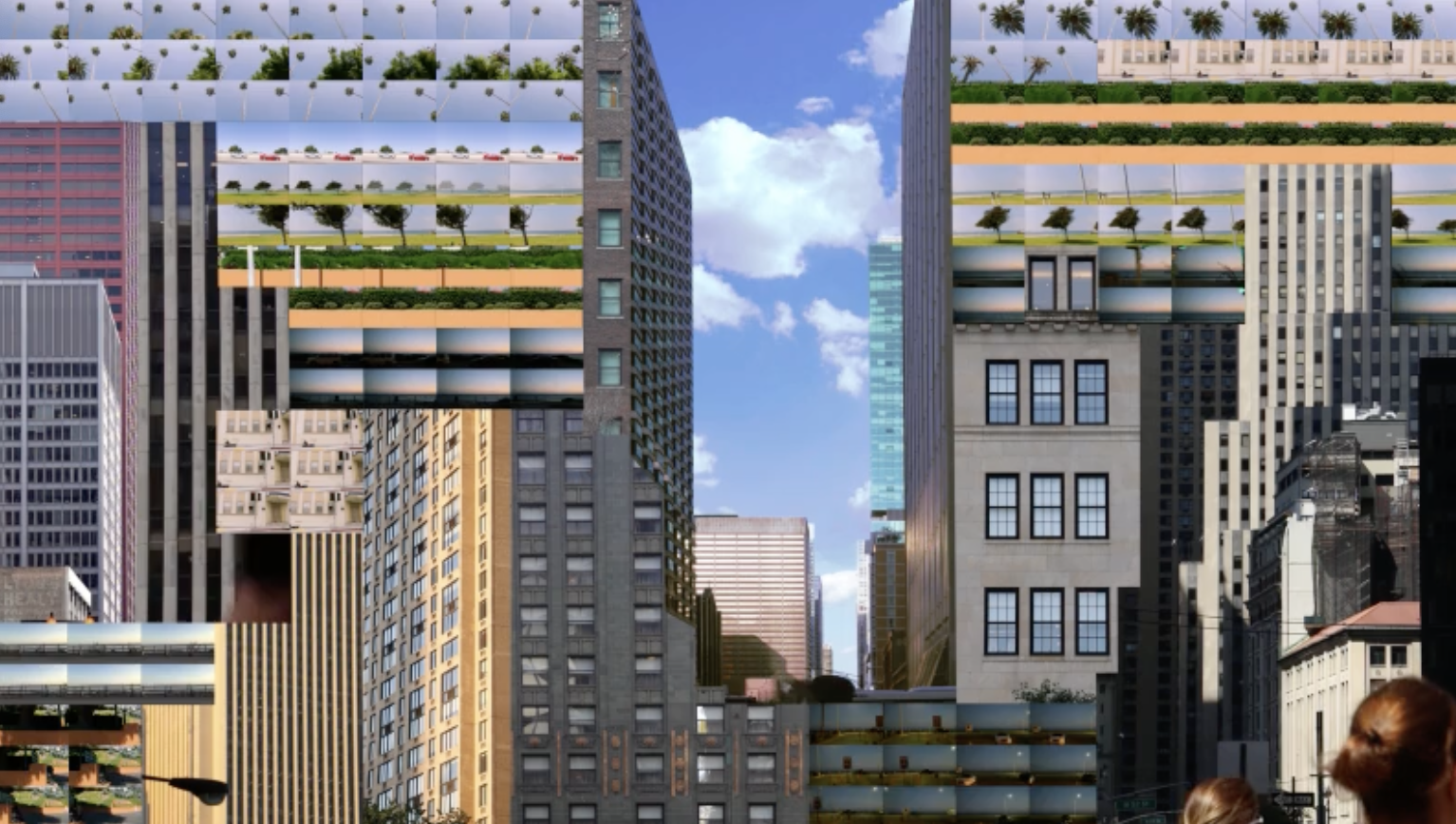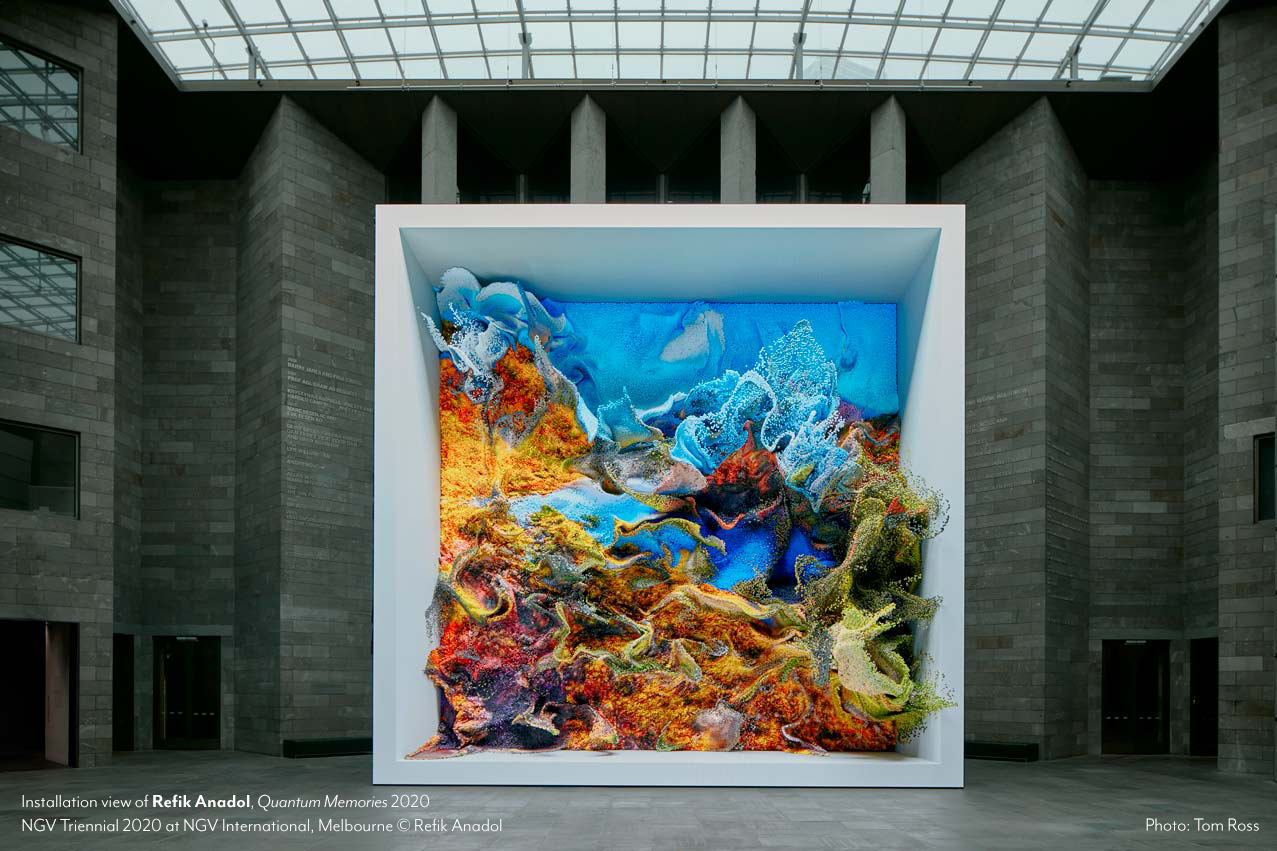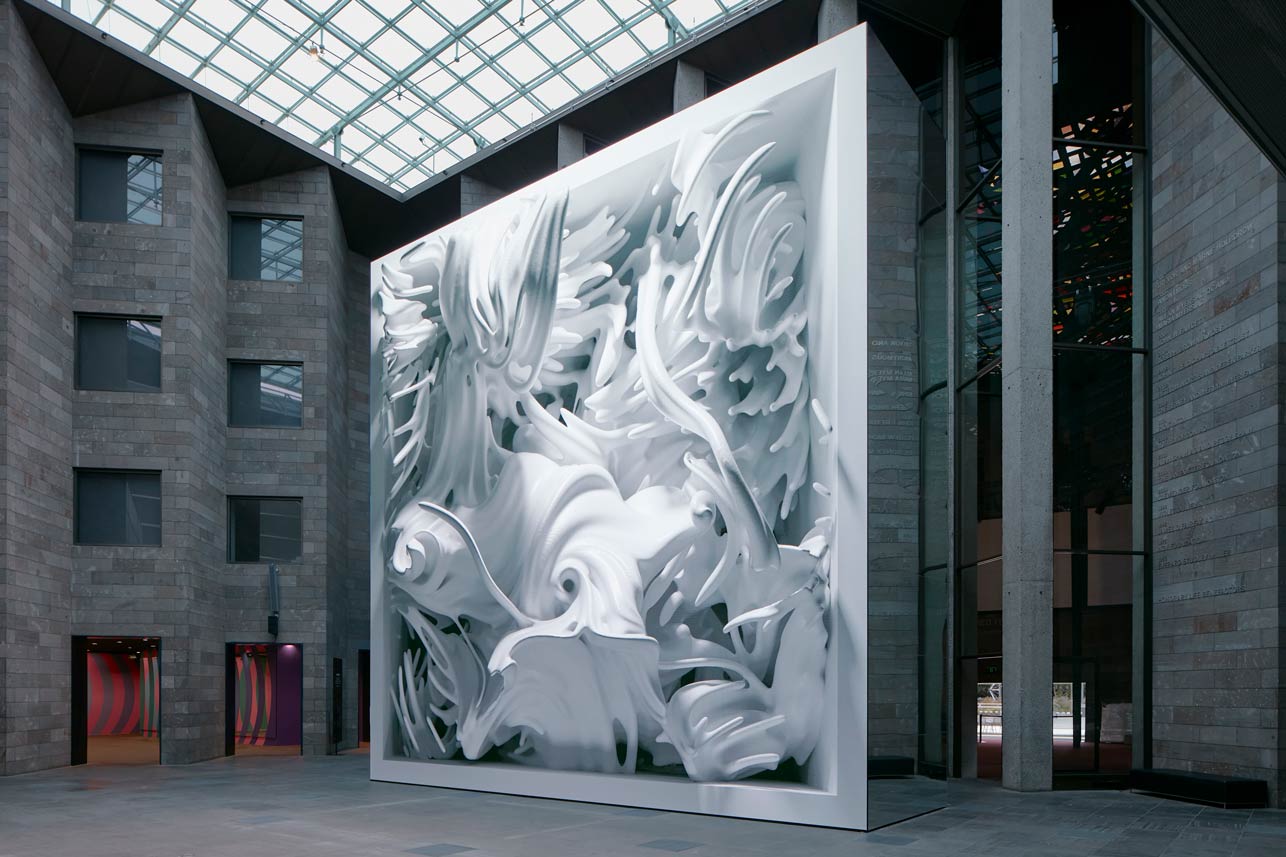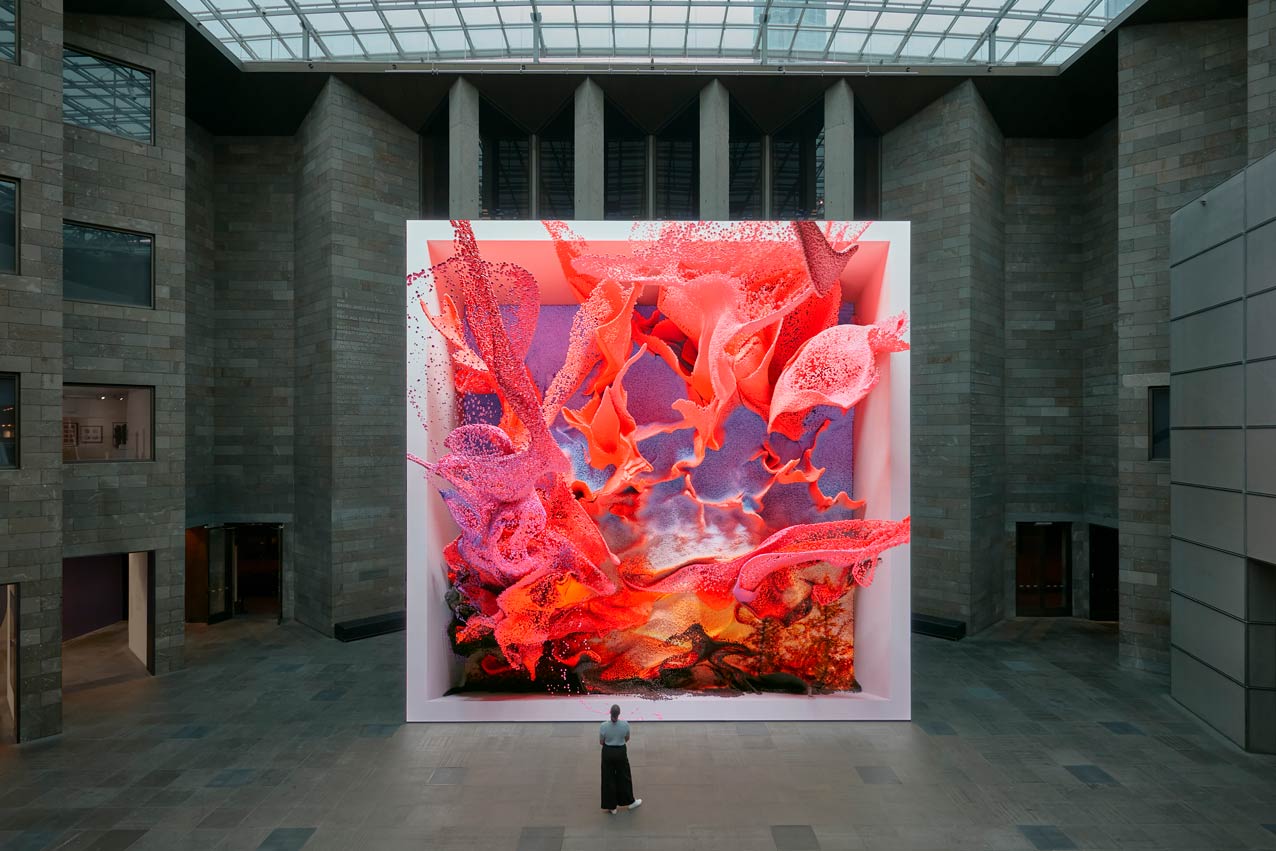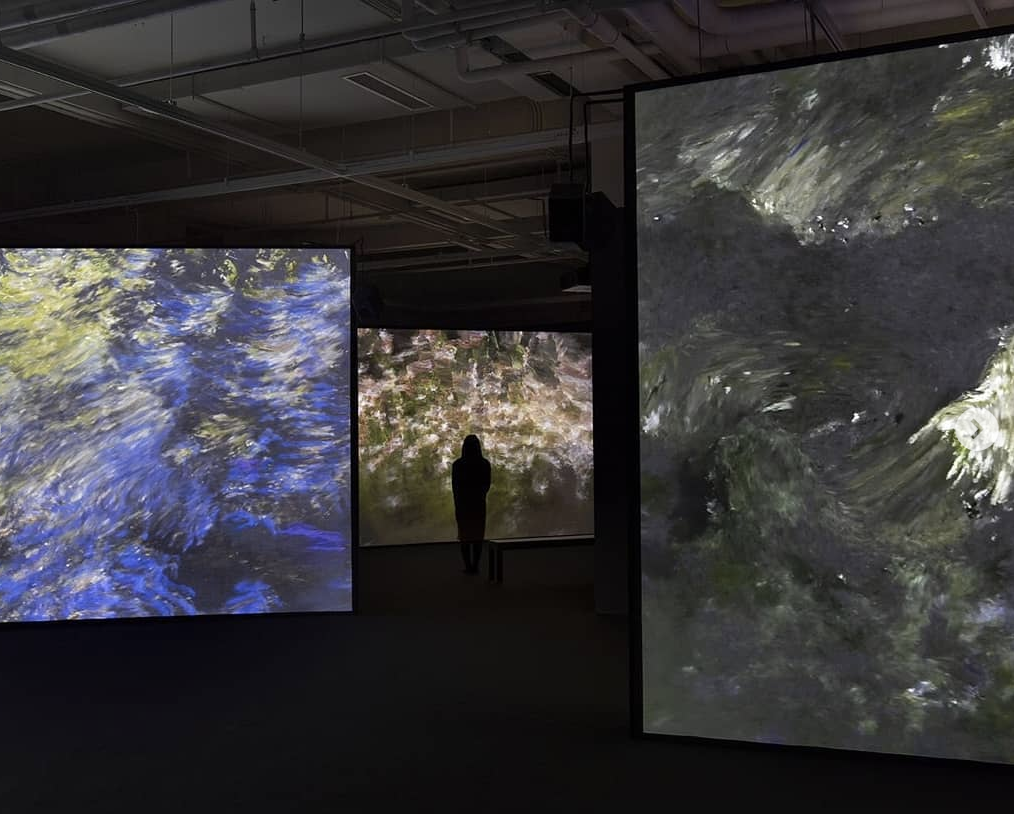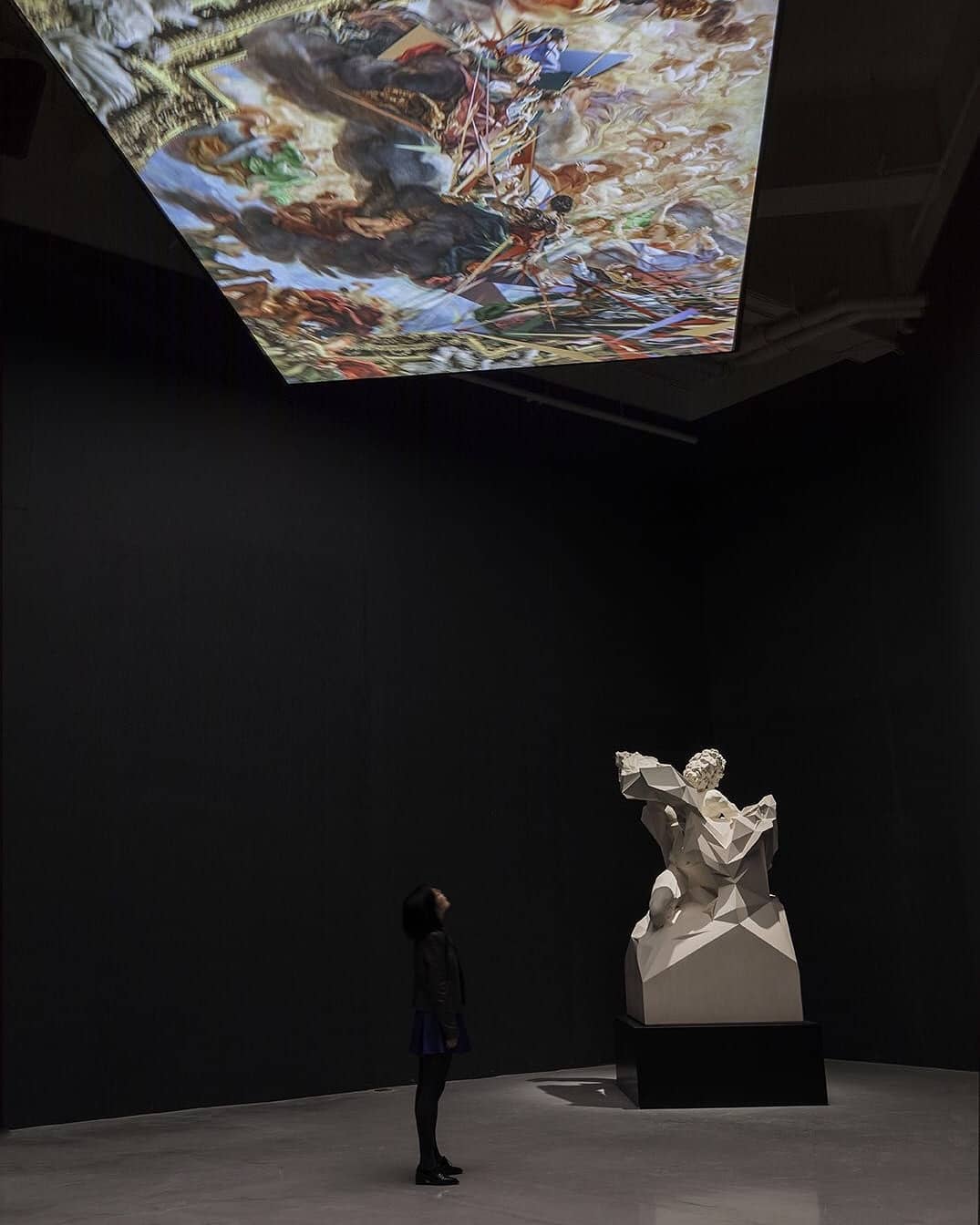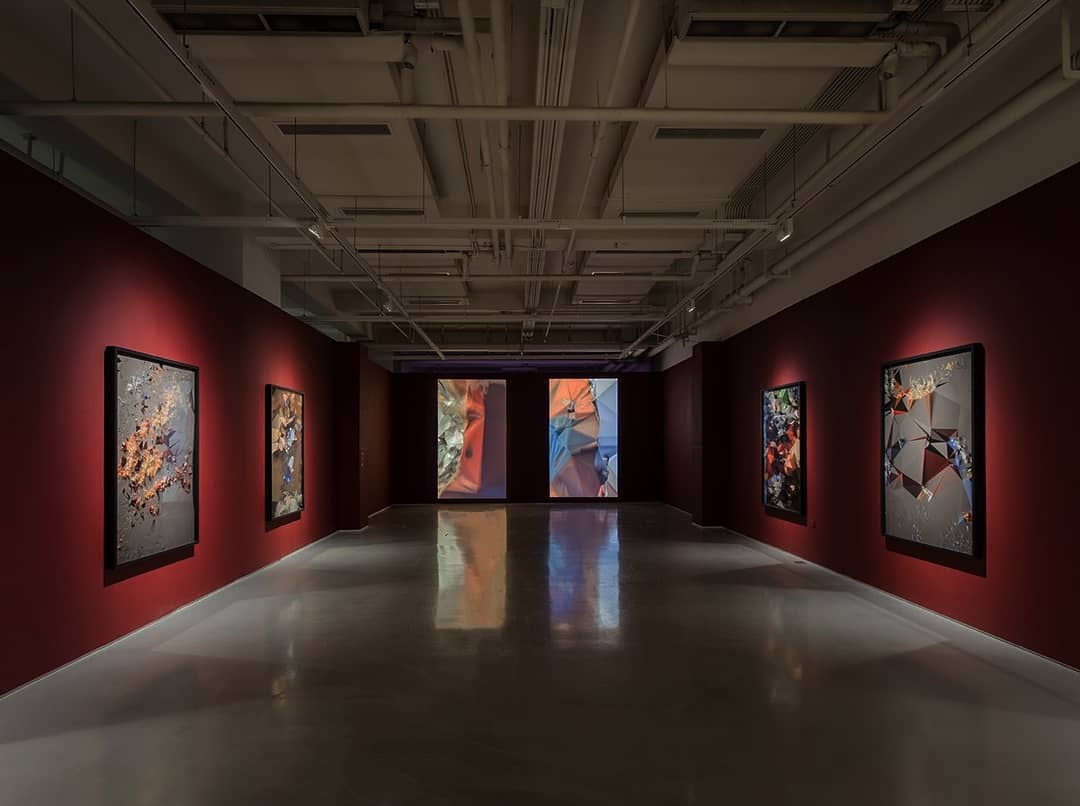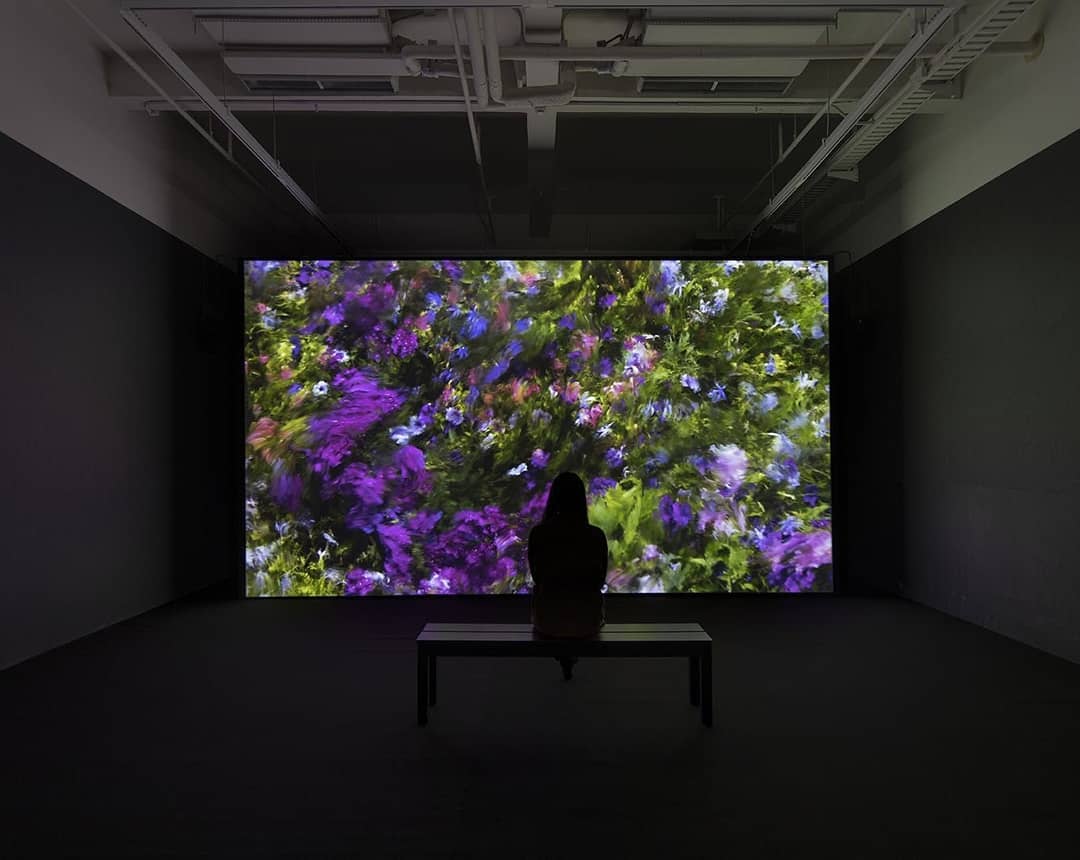Pau Waelder & Roxanne Vardi
Yuge Zhou‘s artworks and artistic practice explore connections, isolation, and longing across natural and urban spaces as sites of shared dreams. The artist creates immersive experiences through the digital collage technique. Niio recently commissioned two artworks by Yuge titled “Interlinked I”, 2022 and “Interlinked II”, 2022. The title, ‘Interlinked’ was inspired by the film Blade Runner 2049, in which there is a poem recited by the protagonist as a base-line test.
A system of cells interlinked within
Cells interlinked within cells interlinked
Within one stem. And dreadfully distinct
Against the dark, a tall white fountain played.
In the film, the main protagonist and the female protagonist’s lives are interlinked even though their lives are opposite. Their mission and world views are different, but ultimately their actions are driven by their perspectives, and their lives are interlinked because of that. We spoke to the artist about her latest commissioned works and their relation to her overall artistic direction.
As part of your artistic practice you are known for your digital collage artworks which bring together numerous video clips taken into a coherent whole that represent the cycle of urban life. Can you please elaborate on this process?
It depends on the project. For this commission, the process involved a lot of improvisation so it has two steps. First, I travel to the locations and collect raw footage. Most of the time I go to the places without a particular mission not trying to film the most photogenic view, but I have a sense of what I want to capture, I am very open minded and I allow chance to happen. Once I collect the raw footage I bring it back to my studio and I start editing and this is when I search for themes and events and interesting justifications in the footage. Then I assemble the footage into the collages, so in a way my work is a visual diary, it’s an intimate process for me. For Interlinked II, which I shot in the subway station, it’s a collage of hundreds of themes, when I filmed the work I knew that I wanted to film the people on the other side of the platform, but I didn’t know what they were going to do. It was about duration and time spent at the location, and then I discovered a rhythm of the moment in the footage and also in the editing process especially the direction of the moment. This is what I think is the most interesting aspect of the footage I capture, what I want to highlight in the project. A lot of my recent work is very different from the collage works, the newer works are more planned and scripted, and I have a specific vision of what I want to do and I am kind of a director and I have a team of people working with me, its different depending on the work, but I enjoy both processes equally.
Yuge Zhou, Interlinked II, 2022
It’s interesting that these works show a very marked rhythm, like other previous works such as Underground Circuit, how they compare to other works like Soft Plots or Green Play which are more about expanded space that you create through collage compared to these compressed spaces. How would you relate these kinds of works?
There is a lot to do with architectural space that I want to capture. Both in Interlinked I and in Interlinked II, in addition to the rhythm of the people there is the rhythm of the architecture as a formal element, the verticality of the urban space of the east coast and the horizontality of Los Angeles, of the west coast. I composed my scenes in different grids for both pieces. I see Interlinked II more as a network of people, as a labyrinth of the city. That is the reason why it is more contained, it is very purposeful, people can see the boundaries of the framing, of the different sections. With a piece like Green Play it is an open field, the color comes from the people doing their activities on the grass field, a more coherent background, I want to create a scene that is more seamless instead of emphasizing the boundaries of the architecture. Green Play and Soft Plots are more about the surrealist landscape as a stage for these activities.
Yuge Zhou, Green Play, 2016
Different works generate different feelings, do you want to play with these feelings or to keep a more distant relationship with what you portray?
It’s not so intentional, I want to have the feeling come out of the work on it’s own without trying to put that in front of the people. Green Play or Soft Plots, are about leisure activities and about the open space. The carefree spirit of American life comes out of the screen and people feel that optimistic spirit which I believe is so American. With Underground Circuit or Interlinked II, it is about an in-between space, people going from one destination to another, they have a mission, they go to work or to meet someone, people feel a lot more trapped in that space, they feel a lot more anxiety, these moments are more machine-like.
Yuge Zhou, Soft Plots, 2017
The term Collage was first introduced as an art practice by Cubist artists Pablo Picasso and Georges Braque in 1910 as an experimental art form in order to break from the flat representation of painting. This medium was later taken up by Dadaist artists who further sought to challenge the traditional perceptions of art. Can we see your artworks as further expansions and explorations to challenge accepted art forms?
Yes, Cubists definitely have a great influence on my work. But I also want to mention the Chinese traditional landscape paintings. In a way this is another form of Cubism, because in these paintings the viewers are presented with collages of time which are very flat, like compressed narratives, multiple events from different times and perspectives happening simultaneously in those landscape paintings. So I am influenced by both cultures; Eastern and Western, and by their histories. In terms of video, a lot of video framing is conventional, a lot of artists are trying to break the rules nowadays, I am one of those artists, for me framing is very important in painting and photography. For me I want to introduce the idea of unconventional framing in my work. It’s different because it’s not painting, it’s something that happens over time, because of that, events unfold over time and create interesting juxtapositions and meaningful coincidences and stories happen over time and that is what I am trying to push over that medium and the unconventional collage of framing in my work is that juxtaposition. That is the beautiful thing that happens, the accident, meaningful stories happening over time. One of the most famous urbanscape paintings in China is titled Along the River during the Qingming Festival, (1085-1145) as a classic traditional landscape painting you can see a lot of stitching of events together and things happening simultaneously on the canvas but it takes time to see it. It’s interesting because it takes time to see things in my work too, so there is a lot of parallel.
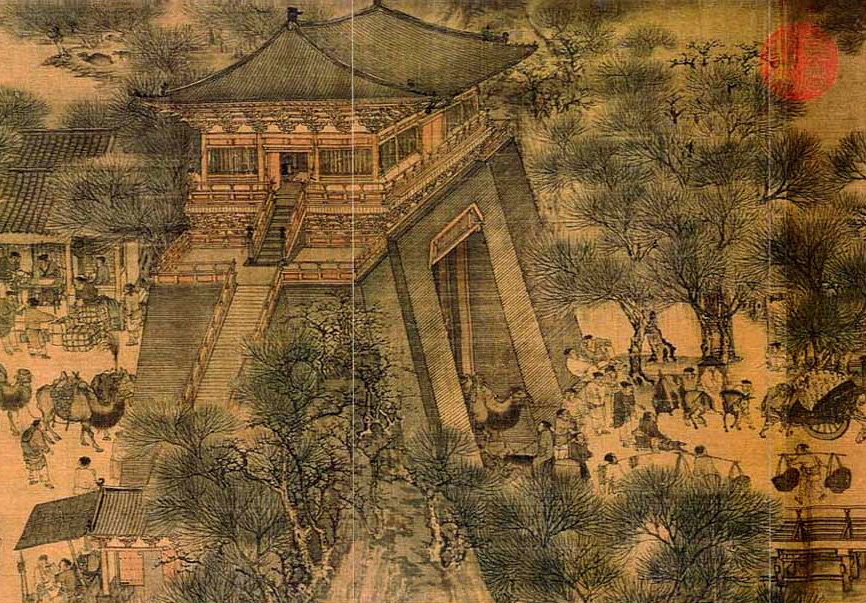
“I am influenced by both cultures; Eastern and Western, and by their histories.”
In your video installations, the elements of the collage are projected onto three-dimensional shapes that give them a certain sculptural quality and jointly configure a sort of trompe-l’oeil. What interests you about transforming your video collages into these physical installations where the solidness of the objects is combined with the ephemerality of the projected images?
There are two aspects to it, one is like you said in the question that I want to enhance the physicality of the ephemeral video medium and to create a surprise dimension for people approaching the work to see the three-dimensionality, almost like a spectacle, because video art takes place on a two-dimensional plane pushing beyond that giving it a physical aspect is important in my work. The second aspect is that of rhythm. Conceptually, my work has a lot to do with architectural space, in Interlinked I and Interlinked II, and another work of mine titled To Afar the Water Flows they are all shot in urban architectural spaces, and I want to use the physical aspect to emphasize the architectural aspect in the subject matter in the video to create the three-dimensional relief as if it’s some kind of architectural relief it makes the city look like a piece of sculpture.
Some of your works such as, Interlinked II, displays a common public space of people’s commute in subway stations. Could you please share your interest in this subject matter?
One of the inspirations for my works comes from documentary photographers like Walker Evans that capture the American vernacular of ordinary life and indigenous architecture. For Interlinked II it came about during my visit in New York city, I was strangely fascinated by the subway structure where the platforms of the local stops were on opposite sides. So I noticed that while people wait for their train they can’t help but observe those on the other side of the platform as if they are actors on a stage, so the station is like a two way theater. So I want to explore this sense of theatricality and urban rhythm embedded in those ritualistic moments. Theatricality is a key word of what I want to capture.
“I constantly try to seek out the in between space, the gray area, not here and not there, that in between is the most interesting and the most beautiful for me.”
It’s interesting that many video artists see themselves as directors creating a theater, and that it also relates to the character of the flaneur described as the person who subtracts oneself from the rhythms of the city who look at what others are doing.
A lot of video artists use cameras, the camera for me is an extension of my sight, my eyes, I am very aware of looking, of observing the other side, and of me being observed simultaneously. The Flaneur, speaks about the outsider and the insider. If you are distant and observing the subject matter it feels more distant from the subject matter you are looking at so it feels like an outsider perspective, and sometimes like in Interlinked I, I stood on 42nd street so I was part of the collective rhythm so it was more of an insider perspective. I felt like one of them.
Yuge Zhou, Interlinked I, 2022
Although your works often represent turbulent scenes of daily life they have a meditative quality to them as well. How do you translate these scenes of the multiplicity of daily life into contemplative compositions and what is the role of digital technologies in your practice?
It’s interesting you use the word turbulent, because I never thought about it in that way. I think it’s very exciting, a lot of activities are happening on the canvas at the same time. It’s mostly about the ritualistic moments of daily life, and stitching them together helps emphasize the flows and the rhythm of those activities and because a lot of things are happening simultaneously, I think that those simultaneous activities in a way defines urbanity. In urban space a lot of things happen simultaneously. I am trying to portray that in my work which creates a sense of rhythm and in a way defines a sense of place. The meditative aspect you see in my work is the collective rhythm that comes from those simultaneous events that happen in the city. I mentioned traditional landscape paintings, there is a sense of Eastern philosophy rooted in my work, because in Eastern culture we seek to find peace beneath the turbulent activities of everyday life so the meditative quality in my work comes from that aspect of my upbringing. The digital, the technology, is like my paint brush, if I were a painter it would be my paintbrush to help me paint.
Your work, Interlinked I, shows a juxtaposition between life in the East Coast and the West Coast of the United States incorporating on the one hand elements of urban life such as trains, cars, and skyscrapers adjoined by the representation of a blue sky in the middle of the work. Does it make sense to contemplate this work in a broader sense to your longing of the East as an artist living in the Western part of the world?
I didn’t really think of that for this work, but in a way it does relate to it because in my other work When the East of Day Meets the West of the Night, the viewer sees a collage of footage from two sides of the Pacific ocean, of the Chinese side and the American side, so there is a sense of the togetherness, the sharing of the sky, of the water, the linking of the water of the two lands, the Pacific ocean is a separation but also a link of both sides of the world. I think in Interlinked I which is filmed in the east coast and the west coast of the United States, one landscape is very open on the west coast the pacing is very leisurely, whereas the other is very vertical on the east coast, and in many ways when I stitch the footage together they share the same sky. The pasting of the footage says a lot of the limitation of the world, there are a lot of things that we all share, it’s all interlinked, it’s all connected. We all share the same sky, the same air, a lot of the cores of humanity are the same, the core emotions we experience. That is the connection between my work. Maybe because I come from drastically different cultures, I constantly try to seek out the in between space, the gray area, not here and not there, that in between is the most interesting and the most beautiful for me.

